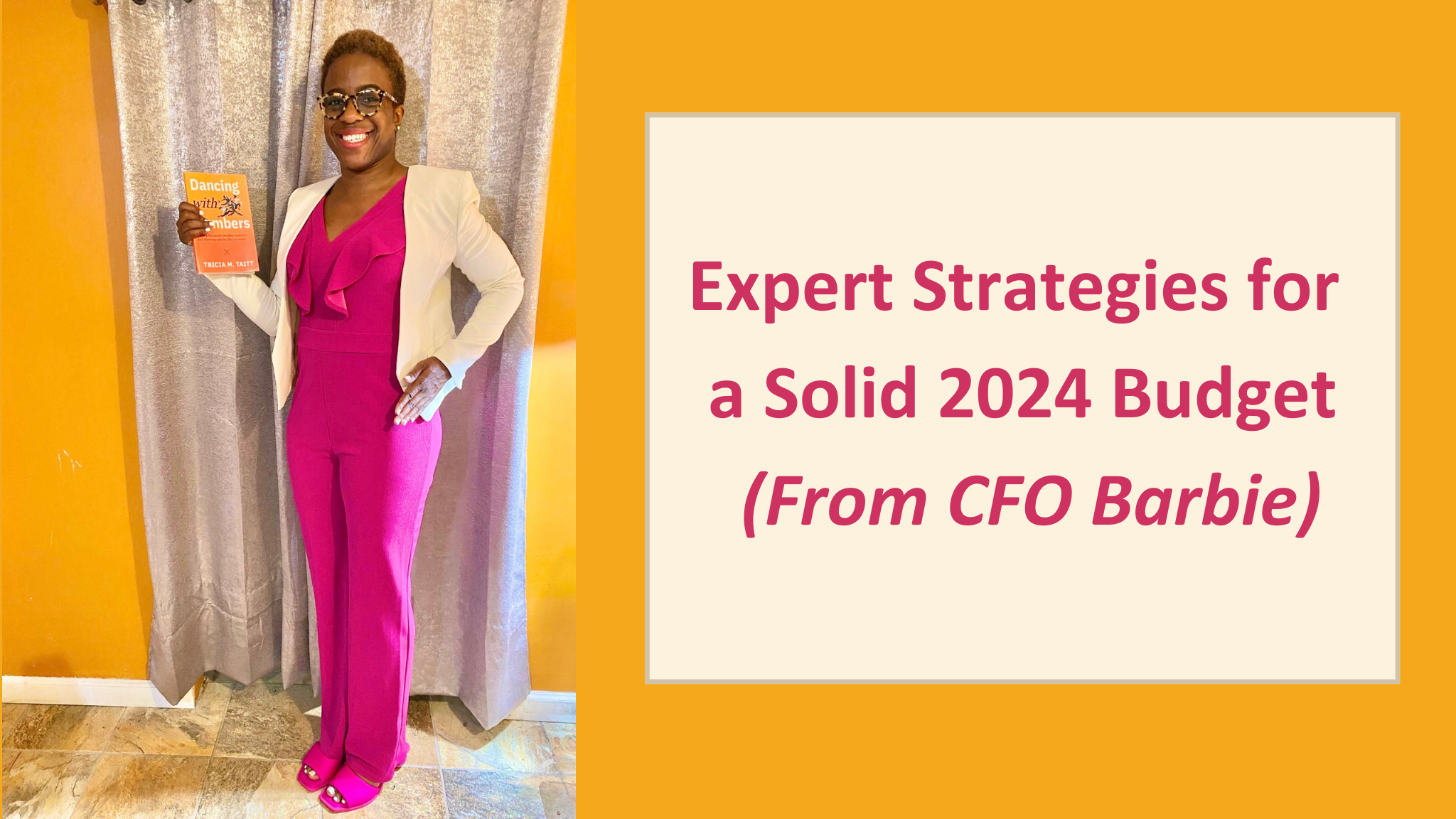In the spirit of this week’s Halloween character, CFO Barbie, is here to tell you that if you haven’t already started budgeting for 2024, here are the key steps to take to ensure a smooth process.
On The Expense Side:
1. Audit expenses. Look at the last 12-18 months of spending to see what the trends are. Calculate the average monthly spend for each expense line item. Use that as an initial estimate of what your monthly expense will be next year. Change the numbers in certain months if you think the numbers will be seasonably higher or lower.
2. Work with your leadership team, operations manager and/or executive consultant to determine how you plan to grow the business next year. Determine what additional resources -technology, people, space, software, equipment, insurance, etc – will be needed, and what other steps will have to be taken.
3. Research the cost for additional resources and consider in what month you’ll incur the expense. Add these additional costs into the baseline 2024 cost estimates calculated in Step 1. Cost increases are usually expected for software subscriptions, insurance, rent, people costs (1099 and employees), marketing expenses and inventory/ingredients.
4. Be conservative. Increase your expense estimates by another 10% to account for contingencies (unforeseen repairs, emergencies, opportunities).
On The Revenue Side:
1. Define your financial goals for the year. Where do you want your business to be in a year? What about in five years? The financial goal should be broken down into price and volume – by product or service type – so you’re clear on how each of your offerings contribute to the total financial goal.
2. Have a conversation with your business development person, sales person, outsourced CFO or whoever is client facing to forecast how many of each product/service/project you think might be sold next year, compared to what you did this year. Don’t worry, the estimate does not have to be perfect; just make an educated guess!
3. If you’re a service based company, look back historically and see how many small, medium and large projects you’ve completed. Based on that and conversations with clients, you can estimate how many small, medium and large projects (as indicated by revenue size) will be completed next year.
4. If you’re a product based company, take the same approach. Leverage 12-18 months of historical data to come up with a baseline of monthly revenue for the following year. Apply a modest growth rate to the estimated revenue for each product or service type.
Planning to add a new product or service?
Start slow and be conservative with your estimates. That means budget more expenses than you expect to spend and less revenue than you expect to make.
Remember, if you bring a new offering to the market, it has to either solve a problem or alleviate a pain point for your existing customer or a new customer.
Conduct customer interviews, manage focus groups, and send out surveys to get a sense of customer needs, and therefore potential demand. If you don’t verify the need, you’ll be wasting time, money and energy. So start small and test the market.
Expect a modest revenue increase from your new offering unless you already have contracts signed for payment next year.
Here are some questions to ask yourself when estimating the cost of adding an additional product or service.
Will there be an increase in sales and marketing?
What are the costs of goods sold/direct costs associated with the product or service?
Will you need to hire an additional person?
Will you need to add certain technology?
If the additional revenue expected is not sufficient to cover estimated costs and investments for next year, consider your financing options. Be thoughtful with what sources of capital you use to fund your business.
As an outsourced CFO practice, we take all of our clients through this budgeting process at this time of year.
Contact us to help you with strategic planning, optimizing profits, forecasting the financial impact of adding a new product or service and accessing capital.
You have less than 2 months before year end but it’s not too late to get next year’s budget in place. If you need support, start now. Schedule a meeting and let’s chat!
Click Here to Schedule a Financial Strategy Call

Tricia Taitt is the CEO and Chief Financial Choreographer of FinCore. She holds an M.B.A from The Fuqua School of Business of Duke University, and a BS in Economics with a Finance concentration from The Wharton School at the University of Pennsylvania. For over 20 years, she’s been a finance professional. Half of the time was spent working on Wall Street while the other half was spent in the trenches side by side with small business owners. As a result of working with FinCore, clients have been able to take control of their numbers and feel more confident in their ability to make decisions, while increasing profits by 10% and building a cash stash to invest in growth. Follow Tricia on LinkedIn and Instagram.

